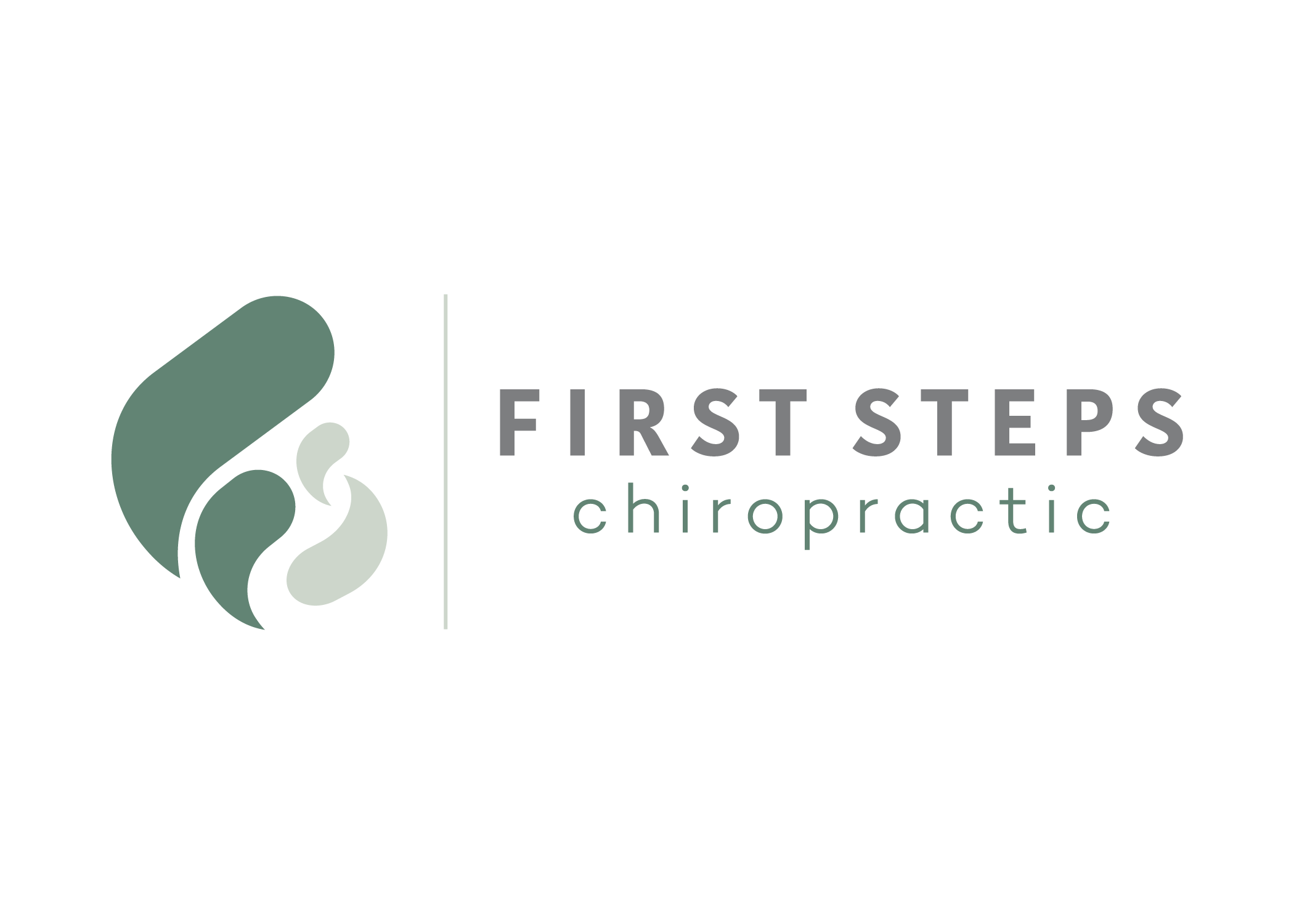Before we dive into specific techniques, it's important to understand that not all chiropractic care is the same. The goals can be very different depending on where you are in your health journey. Generally, we can break down the different types of chiropractic care into three main philosophies: Relief Care for getting you out of pain fast, Corrective Care for fixing the underlying problem, and Wellness Care for keeping you healthy long-term.
Knowing which approach fits your personal goals is the first step toward a successful partnership with your chiropractor.
Your Guide to Chiropractic Care Philosophies
Let's use a simple analogy. Imagine your body is a car.
One day, a warning light flashes on the dashboard, and you hear a strange clunking sound. You immediately take it to the mechanic for a quick fix. That’s Relief Care.
But what if the mechanic finds that the clunking isn't just a loose part, but a sign of a deeper engine problem? A more involved repair is needed to make sure your car doesn’t break down again next week. That’s Corrective Care.
Finally, once the car is running perfectly, you don't just forget about it. You bring it in for regular oil changes and tune-ups to keep it in top shape for years to come. That’s Wellness Care.
These three scenarios perfectly capture the core philosophies that guide chiropractic treatment. Each one has a different purpose and timeline, designed to meet you exactly where you are.
The Three Phases of Your Health Journey
Most chiropractic treatment plans are structured in phases, moving from urgent symptom relief all the way to proactive, long-term wellness.
Relief Care: Putting Out the Fire
The most common starting point for new patients is Relief Care. The goal here is simple and direct: get you out of pain.
The focus is squarely on reducing your immediate discomfort, calming down inflammation, and helping you feel better as quickly as possible. This phase is for anyone dealing with the acute pain of a new injury or a flare-up of an old one.
Corrective Care: Fixing the Foundation
Once the initial pain starts to fade, we can shift our focus to Corrective Care. This is where we move beyond just turning off the warning light and start looking at what caused it to come on in the first place.
The goal here is to address the root cause of the problem—things like poor posture, old injuries, or spinal misalignments that have been there for years. This phase often involves a more intensive series of adjustments paired with rehabilitative exercises designed to create lasting structural change.
Wellness Care: Maintaining Optimal Health
Finally, there's Wellness Care, also known as Maintenance Care. This is the proactive, long-term phase of your health journey. Just like your car's routine maintenance, this involves periodic adjustments to maintain your spinal health, prevent future problems from popping up, and keep your nervous system functioning at its absolute best.
To make it even clearer, here's a simple breakdown of the three philosophies. This table compares the goals and focus of Relief, Corrective, and Wellness care to help you see which approach best aligns with your current needs.
The Three Phases of Chiropractic Care at a Glance
| Care Philosophy | Primary Goal | Best For | Typical Focus |
|---|---|---|---|
| Relief Care | Immediate pain and symptom reduction. | Acute injuries, flare-ups of chronic conditions. | Reducing inflammation and providing quick relief. |
| Corrective Care | Addressing the underlying structural cause of the problem. | Chronic issues, poor posture, recurring pain. | Restoring proper function and creating long-term stability. |
| Wellness Care | Maintaining health and preventing future issues. | Anyone looking to optimize their health and well-being. | Proactive adjustments to support nervous system function. |
Understanding where you fit in helps you and your chiropractor set clear expectations and work together toward the same goal, whether it’s immediate relief or lifelong health.
Your nervous system controls every single function in your body. By making sure your spine is properly aligned, wellness-focused chiropractic care helps maintain clear communication between your brain and your body, supporting overall health and resilience.
More advanced approaches, like the ones that integrate functional neurology, often blend into the corrective and wellness models. These methods aim to improve that critical brain-body communication for even better long-term outcomes. By understanding these core philosophies, you can confidently navigate the different types of chiropractic care and choose the path that truly supports what you want to achieve.
Understanding Spinal Manipulation
At the very core of chiropractic care, you'll find one foundational practice: spinal manipulation. You've probably heard it called a chiropractic adjustment, and it's what most people picture when they think of a chiropractor's office. This technique is the cornerstone that many other specialized methods are built upon, so it's essential to get what it is, how it works, and why it's so effective.
Think of a joint in your spine like a rusty door hinge. It's stiff and stuck. The door can't swing open and closed smoothly, and trying to force it just makes it creak and groan. A spinal adjustment is like a skilled locksmith applying a precise, gentle force to that hinge, realigning it and restoring its proper motion. All of a sudden, the door can swing freely again.

This restoration of movement is really the primary goal. When vertebrae get misaligned or restricted—a condition we call a subluxation in the chiropractic world—it can interfere with joint mobility, irritate the surrounding nerves, and lead to pain and stiffness. The adjustment is all about correcting these restrictions, allowing your body to function the way it was designed to.
What Is That Popping Sound?
One of the first questions people ask is about the audible "pop" or "crack" that sometimes happens during an adjustment. This sound, known as cavitation, can be a little surprising if you’re not expecting it, but it's completely harmless.
Here’s what’s happening. Your joints are lubricated by a special fluid called synovial fluid, which contains dissolved gases like oxygen and nitrogen. When a chiropractor applies a quick, gentle thrust to a joint, the pressure inside the joint capsule changes rapidly. This drop in pressure allows the dissolved gases to form a tiny bubble, and that's what creates the signature popping sound.
It’s the exact same process that happens when you crack your knuckles. The sound itself is not the goal of the adjustment, and many effective, low-force techniques produce no noise at all.
Whether you hear a pop or not has no bearing on the quality or effectiveness of the treatment. The true measure of a successful adjustment is the restoration of proper joint motion and the improvement in your nervous system function that follows.
A Precise and Controlled Procedure
It's so important to understand that a chiropractic adjustment isn't about forceful cracking or twisting. It is a highly precise and controlled procedure performed by a trained professional who has spent years studying anatomy, physiology, and biomechanics. Chiropractors use their hands or specialized instruments to apply a very specific amount of force in a precise direction to a particular joint.
This meticulous approach is what ensures both safety and effectiveness. The technique is carefully tailored to each person's unique body, age, and condition. For instance, the adjustment given to a newborn infant is incredibly gentle—often using no more pressure than you’d use to test the ripeness of a tomato.
The proof of its value is in the numbers. Chiropractic spinal manipulation accounted for over 45% of chiropractic treatment revenues worldwide as of 2019. This is largely driven by its success in treating common conditions like lower back pain, which affects over 600 million people globally. Here in the United States, licensed chiropractors perform over one million adjustments every single day, highlighting its role as a primary, non-invasive healthcare choice for so many. You can read more about the global chiropractic market trends on biospace.com.
By demystifying this core practice, you can better appreciate the various techniques that have grown from it. Understanding spinal manipulation gives you a solid foundation for exploring the wider world of chiropractic care and figuring out how it can be adapted to meet your specific health needs and goals.
Exploring Different Chiropractic Techniques
Chiropractic care is anything but a one-size-fits-all solution. While the classic spinal adjustment is what most people picture, the field is actually full of specialized techniques, each with its own philosophy and purpose. Think of a skilled chiropractor like a master craftsman with a full workshop—they have a whole array of tools and methods to choose from, picking just the right one for the job at hand.
Your chiropractor selects a technique based on your specific body, your health condition, and even your personal comfort level. These approaches generally fall into two main camps: the traditional, hands-on manual adjustments and the more modern, low-force, instrument-assisted methods. Knowing the difference helps you understand exactly how your care is being tailored to you.
The Power of Hands-On Manual Adjustments
Manual adjustments are the cornerstone of chiropractic care. These are the techniques where the chiropractor uses their hands to apply a controlled, quick, and gentle thrust to a specific joint. The goal is simple but powerful: restore proper motion, improve the joint's alignment, and take pressure off the surrounding nerves.
Two of the most trusted and widely practiced manual methods are the Diversified and Gonstead techniques. Each offers a structured and effective way to analyze and correct issues in the spine.
Diversified Technique: The Universal Standard
The Diversified Technique is the most common method you'll find in chiropractic offices, and for good reason—it's incredibly versatile. It’s a classic hands-on approach where the chiropractor applies a precise, high-velocity, low-amplitude thrust to restore proper movement in a joint.
Because it's so adaptable, the Diversified method can be used on the spine as well as other joints in the body, like a stiff shoulder or a sore wrist. It’s a fantastic choice for generally healthy adults who need relief from issues like acute low back pain or chronic neck stiffness and who are comfortable with the occasional “popping” sound (which is just gas being released from the joint).
Gonstead Technique: The Structural Foundation
The Gonstead Technique is all about precision and in-depth analysis. Practitioners of this method view the pelvis as the body's foundation. If that foundation is unstable or tilted, it’s going to cause problems all the way up the spinal column. It’s like building a house on a crooked foundation—sooner or later, the walls will start to crack.
Before making any adjustment, a Gonstead chiropractor performs an incredibly thorough exam, which might include X-rays, checking for subtle temperature differences along the spine, and carefully assessing your posture. The adjustments themselves are hyper-specific, targeting only the problem areas without any unnecessary twisting. This meticulous approach is perfect for patients with complex structural issues or anyone who prefers a deeply analytical and targeted form of care.
Gentle, Instrument-Assisted Adjustments
Not everyone is a candidate for—or comfortable with—traditional manual adjustments. For patients who are sensitive, dealing with acute inflammation, or simply prefer a gentler approach without any popping sounds, instrument-assisted techniques are a wonderful alternative. These methods use specialized tools to deliver a very precise and controlled force to the joint, achieving the same goal with less manual pressure.
This approach often involves preparing the body for the adjustment by first working on the surrounding soft tissues.

By first addressing muscle tension, chiropractors can make the spinal adjustments that follow more effective and much more comfortable for the patient.
Thompson Drop-Table Technique: Using Gravity as an Ally
The Thompson Drop-Table Technique is a clever mix of manual skill and mechanical assistance. It uses a specially designed table with segments that can be raised just a fraction of an inch. When the chiropractor applies a gentle thrust, that section of the table drops slightly.
Think about trying to loosen a stubborn bolt. Instead of just yanking on it with all your might, you might tap the wrench with a hammer to help it break free. The drop of the table works in a similar way, using momentum and gravity to help make the adjustment. This allows for a very light yet effective correction, making it a great option for people of all ages, from children to seniors.
Activator Method: Precision and Speed
The Activator Method is one of the most widely researched instrument-based techniques in the world. It uses a small, handheld, spring-loaded tool called the Activator Adjusting Instrument to deliver a quick, low-force impulse to a very specific point.
Because the thrust is so incredibly fast, the body's muscles don't have time to tense up and resist the adjustment. This allows for an extremely precise correction with minimal force. The Activator is fantastic for treating smaller joints, like those in the hands and feet, and it's also ideal for patients with conditions like osteoporosis or for adjusting infants, where only the gentlest touch is required.
To help you see how these techniques stack up, here’s a quick comparison.
A Quick Guide to Common Chiropractic Techniques
This table breaks down some of the most popular chiropractic adjustment techniques, comparing their methodology, force level, and the conditions they’re best suited to treat.
| Technique Name | Methodology | Force Level | Best Suited For |
|---|---|---|---|
| Diversified | Hands-on, high-velocity, low-amplitude thrusts. | Moderate to High | General spinal misalignments, joint restrictions, wide range of conditions. |
| Gonstead | Detailed spinal analysis (including X-rays), precise hands-on adjustments. | Moderate to High | Complex structural issues, pelvic imbalances, disc problems. |
| Thompson Drop | Uses a specialized drop-table to assist a gentle thrust. | Low to Moderate | Patients who prefer less force, suitable for all ages. |
| Activator Method | Handheld instrument delivers a fast, low-force impulse. | Very Low | Sensitive patients, small joints, infants, elderly, and those with osteoporosis. |
Ultimately, the goal is to find the right tool for the right person.
For those interested in other advanced instrument-based approaches, some clinics focus specifically on the nervous system. You can explore how some of these specialized methods work, like the Torque Release Technique, which uses a unique tool to deliver a highly specific and gentle adjustment.
The wide variety of different types of chiropractic care means that treatment can truly be personalized. From a powerful athlete needing a deep manual adjustment to a newborn needing the softest touch, there's a safe and effective technique available to help anyone achieve their health goals.
Treating More Than Just the Spine
While spinal adjustments are the heart of chiropractic, the reality is that a truly modern approach looks at the entire musculoskeletal system. We've come to understand that pain in one spot is often just a symptom of dysfunction somewhere else. Your body is an interconnected network—a problem in your foot can absolutely travel up the chain to your knee, hip, and even your back.
This is why so many different types of chiropractic care now incorporate therapies that go far beyond the spine. By treating the muscles, tendons, ligaments, and joints in your arms and legs, chiropractors can get to the root of the problem and achieve results that actually last. It’s all about making sure every part of your body is working together in harmony.
Think of your body like a suspension bridge. Sure, the spine is the main tower, but what about the cables (your muscles and ligaments) and the anchor points (your joints)? They're just as crucial for keeping everything stable. If those cables get too tight or the anchors are out of place, the whole bridge feels the strain. A good chiropractor works on the entire structure, not just the tower in the middle.
Going Beyond Spinal Adjustments
To get the best outcomes for patients, practitioners often pair spinal care with other powerful techniques. These complementary therapies support the adjustments, help you heal faster, and give you the tools to maintain your progress long after you leave the office. This integrated model is especially powerful for complex or chronic issues that involve more than just a single joint.
There are really three key pillars to this expanded approach:
- Soft Tissue Therapies: These focus on the muscles and connective tissues that hold your skeleton together.
- Extremity Adjustments: This is about restoring proper function to joints outside the spine, like your shoulders, knees, and ankles.
- Corrective Exercises: These are prescribed movements to strengthen your body, fix your posture, and give you the power to stay healthy for the long haul.
By weaving these methods together, your chiropractor can build a personalized plan that tackles all the contributing factors to your pain, not just the most obvious ones.
Healing Muscles with Soft Tissue Therapy
Stiff, tight muscles are notorious for pulling your spine right back out of alignment, which can make it feel like your adjustments just don't "hold." Soft tissue therapy gets right to the heart of this issue by working directly on the muscles, tendons, and ligaments that support your joints. This might involve anything from targeted massage and trigger point therapy to instrument-assisted methods that break down stubborn scar tissue.
Imagine you're trying to straighten a bent tent pole, but the guide ropes are all tangled and tight. It's almost impossible, right? Soft tissue therapy is like untangling those ropes first. It releases all that tension so the pole can easily slide back into its proper place. This prep work makes the spinal adjustments that follow much more effective and comfortable.
A great real-world example is an office worker with that nagging wrist pain from typing all day. A chiropractor might use soft tissue techniques on their forearm muscles to release tension before adjusting the small bones in the wrist. This dual approach tackles both the joint and the muscular sides of the problem.
Aligning Shoulders, Knees, and Ankles
Pain isn't exclusive to the spine. Extremity adjustments are all about restoring proper motion and alignment to every other joint in your body. This is an absolutely critical piece of the puzzle for athletes, people with repetitive strain injuries, or anyone feeling joint pain in their shoulders, hips, knees, or feet.
It surprises many people to learn that conditions like carpal tunnel syndrome, tennis elbow, and even certain kinds of knee pain can be treated effectively with chiropractic adjustments to the affected extremity. When you restore proper joint mechanics, you can relieve nerve pressure and calm down inflammation.
Let's say a weekend warrior has a nagging knee injury that just won't quit. They could benefit immensely from adjustments to both the knee and ankle joints. This ensures their entire lower body is moving correctly, which reduces uneven stress on the injured area and helps keep the problem from coming back.
Empowering You with Corrective Exercises
The final piece of this comprehensive puzzle is you. Corrective exercises are specific stretches and strengthening movements designed to support the work being done in the clinic. They are prescribed to fix muscle imbalances, improve your posture, and stabilize your spine and joints.
Think of your chiropractor as your health coach, giving you a personalized routine you can do at home. This isn't just generic fitness advice; these are highly targeted exercises meant to reinforce the changes made during your treatments. By taking an active role, you're empowered to take control of your own healing process and build a more resilient body for the future.
How to Choose the Right Chiropractor for You
Okay, so you understand the different kinds of chiropractic care out there. That’s a huge first step. But how do you actually find the right practitioner for you and your unique needs? Choosing a chiropractor is a big deal—this is your health we’re talking about. Finding someone whose philosophy, techniques, and even personality click with yours is key to a great partnership on your health journey.
This process doesn’t have to feel overwhelming. A little bit of homework upfront can help you confidently find a professional you can trust. It all boils down to figuring out what you want to achieve first, then finding the person with the right skills to get you there.

Chiropractic care has become a major part of modern healthcare, and it’s only growing. The global market was valued at around USD 87.35 billion in 2024, and it's set to grow even more. Here in the U.S., chiropractors see patients for over 35 million visits every year. A huge chunk of those appointments—about 69%—are for back and neck pain. You can read more about how chiropractic care fits into modern healthcare models on 360iresearch.com.
Define Your Health Goals
Before you even type "chiropractor near me" into a search bar, pause for a moment. Get really clear on what you're looking for. Are you dealing with sharp, sudden pain and just need to get out of crisis mode? Or are you trying to find a long-term solution for a problem that’s been nagging you for years?
Ask yourself a few simple questions to get started:
- What’s my main goal? Is it just about pain relief? Or am I hoping for better mobility, improved performance in my sport, or just a boost in my overall wellness?
- What’s my comfort level? Does the idea of a hands-on manual adjustment feel right, or would I be more comfortable with a gentler, instrument-assisted approach?
- What's my health philosophy? Am I looking for a quick fix for a symptom, or do I want to dig deeper and address the underlying structural cause of the problem?
Having solid answers to these questions will make your search so much easier. You’ll be able to quickly filter through the options and find a chiropractor whose approach actually aligns with what you need. Think of it as creating your own personal roadmap to finding the right care.
A great chiropractor-patient relationship is built on shared goals and mutual understanding. Knowing what you want from care allows you to find a practitioner who can truly meet your needs, leading to better results and a more positive experience.
Key Questions to Ask During a Consultation
Once you have a shortlist of a few potential chiropractors, it's time to book a consultation. This first meeting is basically an interview—it’s your chance to see if they’re a good fit. Don’t be afraid to ask questions! A good doctor will be happy to answer them.
Here are a few essential things to bring up:
- What’s your primary technique or philosophy? This is a big one. It will tell you if they specialize in a certain method, like Gonstead or Activator, and whether their main focus is on immediate relief or long-term corrective care.
- What does a typical treatment plan look like for my condition? This gives you a realistic idea of how often you’ll need to come in and for how long.
- How will you measure my progress? Will they just ask how you’re feeling, or will they use objective tools like posture analysis, X-rays, or functional movement tests to track your improvement?
- Do you incorporate other therapies? Find out if they also offer things like soft tissue work, corrective exercises, or nutritional advice to support the adjustments.
A thorough initial exam is absolutely non-negotiable. The chiropractor should perform a detailed physical assessment, go over your health history, and possibly recommend imaging before they even think about starting treatment. This in-depth evaluation is how they get a complete picture of your health. You can learn more about the 3 things to look for in a chiropractor near you in our other guide.
Got Questions? We’ve Got Answers.
When you’re thinking about starting chiropractic care, it’s completely normal to have a few questions. The more you understand, the more confident you’ll feel about taking the next step for your health. We've put together some straightforward answers to the things people most often wonder about.
Let's clear up the common curiosities so you feel comfortable and empowered from the very beginning.
How Do I Know Which Chiropractic Technique Is Best for Me?
The truth is, there’s no single "best" technique for everyone. The right approach is always based on your unique situation—your specific health concerns, your body's history, and even what you’re comfortable with. A good chiropractor will always start with a thorough evaluation to get to the root of the issue before ever suggesting a plan.
For instance, someone dealing with osteoporosis would likely benefit from a super gentle, low-force method like the Activator instrument. On the other hand, an athlete with a stubborn, “stuck” joint might get better results from a hands-on approach like the Diversified technique. The most important thing is to have an open conversation with your doctor about your needs and preferences.
Is Chiropractic Care Safe for All Ages?
Absolutely. Chiropractic care is safely adapted for every stage of life, from brand-new babies to great-grandparents. The methods a chiropractor uses will look very different depending on a person's age, size, and health, making sure the care is always gentle and just right for them.
- For Infants: Adjustments are incredibly light, often using no more pressure than you’d use to check if a tomato is ripe.
- For Children: The techniques are modified to fit their smaller, developing bodies.
- For Seniors: Chiropractors lean on low-force methods that take things like joint sensitivity and bone density into account, always putting safety and comfort first.
The key takeaway is that adjustments are always tailored to the individual. The force and technique used on a 250-pound athlete will be completely different from the care provided to a six-month-old baby or an 80-year-old grandparent.
How Is a Chiropractor Different from a Physical Therapist?
While both chiropractors and physical therapists are experts in how the body moves and often work together, they come at it from different angles. You could think of it like this: a chiropractor is like an electrician for your body’s wiring (the nervous system), while a physical therapist is like a mechanic for its moving parts (muscles and joints).
Chiropractors have a special focus on the spine and its relationship to the nervous system. Their primary tool is the adjustment, which is used to correct misalignments that can interfere with nerve function. A physical therapist, in contrast, takes a broader look at restoring movement and strength, often using exercises, stretches, and other therapies to help you recover from an injury.
What Does the Popping Sound During an Adjustment Mean?
That "popping" or "cracking" sound you might hear is called cavitation, and it’s perfectly harmless. It’s just the sound of tiny gas bubbles being released from the fluid that lubricates your joints. When the joint is gently stretched during an adjustment, the pressure changes, and the gas escapes—it’s the exact same thing that happens when you crack your knuckles.
The sound itself isn’t the goal of the adjustment, and plenty of effective, gentle techniques don't make any noise at all.
At First Steps Chiropractic, we specialize in gentle, neurologically-focused care for the entire family. If you're ready to explore how personalized chiropractic can support your family's health and wellness, schedule a complimentary consultation with our team today.

